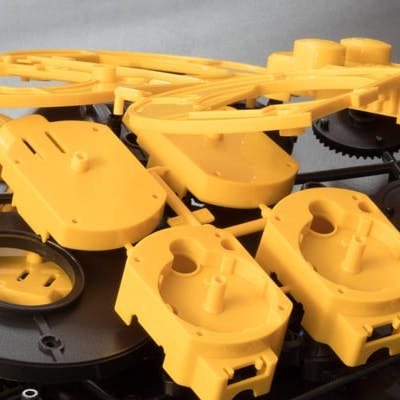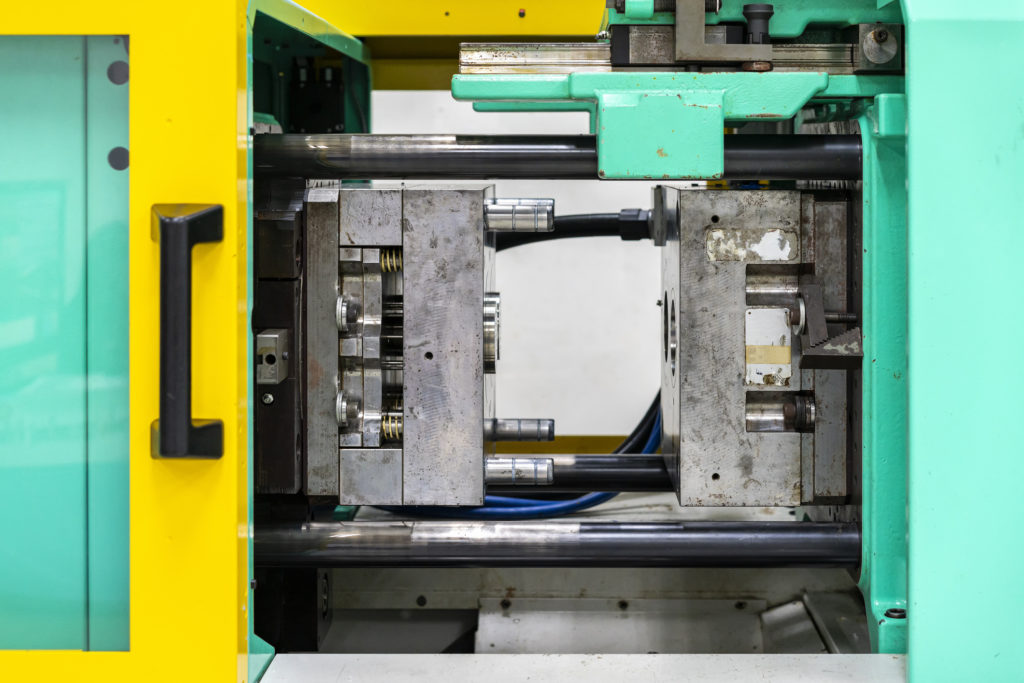The Function of Plastic Injection Molding in Producing Cost-Effective Industrial Components
The Function of Plastic Injection Molding in Producing Cost-Effective Industrial Components
Blog Article
The Future of Plastic Shot Molding: Technologies and trends to View
As the plastic injection molding market develops, a number of crucial fads are arising that assurance to improve its landscape. Automation and wise manufacturing strategies are set to improve efficiency, while the shift in the direction of lasting products mirrors an expanding environmental consciousness. Advancements in 3D printing are leading the method for unmatched design flexibility. These advancements also bring forth challenges that need cautious consideration. Recognizing just how these aspects will engage and influence future techniques is important for stakeholders looking to navigate this transformative duration properly.
Automation and Smart Production
As the plastic shot molding sector develops, automation and clever manufacturing are taking spotlight, transforming manufacturing procedures - Plastic Injection Molding. The integration of advanced modern technologies such as robotics, IoT (Web of Things), and expert system is enabling suppliers to boost efficiency, minimize operational prices, and enhance product high quality. Automated systems simplify operations, minimizing manual intervention and increasing throughput, which is crucial in fulfilling the climbing demand for quick production cycles
Smart manufacturing technologies assist in real-time surveillance and information evaluation, allowing companies to enhance machine efficiency and predict upkeep needs. This aggressive technique not only decreases downtime yet also extends the lifespan of devices. The use of collaborative robotics, or cobots, boosts the flexibility of manufacturing lines, enabling employees and devices to run side by side securely and effectively.
The fostering of automation in plastic shot molding is not just a pattern but a tactical critical for organizations intending to remain affordable in an international market. By harnessing these modern technologies, makers can attain greater precision, minimize waste, and adjust quickly to transforming consumer needs, placing themselves for lasting development in an increasingly computerized future.
Sustainable Products and Practices
The push in the direction of automation and clever production has actually led the way for a greater focus on lasting products and techniques within the plastic injection molding sector. Business are increasingly looking for environmentally friendly choices to typical petroleum-based plastics, causing the fostering of bio-based and recycled materials. These lasting products not just reduce environmental influence however additionally line up with customer demand for greener items.

Additionally, partnership in between manufacturers, material distributors, and environmental organizations is promoting advancement in the development of lasting products that satisfy efficiency criteria without compromising high quality. As laws around plastic use end up being more stringent, the market is poised to adapt by welcoming these lasting techniques, making certain lasting viability and reducing dependence on non-renewable resources. The integration of sustainability right into plastic injection molding is not just a pattern; it is coming to be an important part of corporate duty and operational excellence.
Advancements in 3D Printing
Current improvements in 3D printing technology are substantially changing the landscape of plastic injection molding. The assimilation of additive manufacturing processes allows for the quick prototyping of complicated geometries that were as soon as challenging or difficult to achieve with standard methods - Plastic Injection Molding. This capacity not only speeds up item advancement cycles yet also decreases material waste, lining up with the growing need for lasting production techniques
Additionally, the development of hybrid manufacturing strategies, which combine 3D printing and shot molding, provides manufacturers the ability to produce detailed styles while preserving the effectiveness of automation. This strategy makes it possible for the manufacturing of personalized components customized to certain client requirements without compromising the speed and scalability that shot molding gives.
Furthermore, improvements in materials, such as high-performance polymers and composites especially made for 3D printing, are enhancing the useful abilities of printed parts. These products can stand up to higher stress and exhibit improved thermal residential or commercial properties, making them ideal for even more demanding applications.
As 3D printing proceeds to advance, its assimilation into plastic shot molding procedures assures to improve performance, decrease prices, and foster technology in item style, positioning makers to better meet the difficulties of an open market.
Information Analytics and IoT Integration
Information analytics and the integration of the Internet of Points (IoT) are revolutionizing plastic injection molding by giving manufacturers with extraordinary insights right into their operations. By leveraging real-time data accumulated from interconnected equipments and sensing units, manufacturers can check performance metrics, recognize inefficiencies, and enhance production procedures. This data-driven approach promotes predictive upkeep, reducing downtime and expanding equipment life expectancy.
In addition, IoT assimilation permits enhanced quality control. By constantly tracking variables such as cycle, pressure, and temperature times, manufacturers can promptly spot variances from developed specifications and make modifications in real time. This not only improves item uniformity but additionally reduces waste and scrap rates.
The combination of information analytics and IoT technologies additionally empowers makers to adopt more active production methods. With accessibility to thorough data analytics, organizations can respond to market demands with better adaptability, adjusting production schedules and configurations as needed. This adaptability is crucial in a rapidly altering manufacturing landscape.

Modification and Layout Versatility
How can personalization and layout adaptability enhance the competition of plastic shot molding? Personalization Continued permits suppliers to satisfy particular customer demands, accommodating one-of-a-kind dimensions, forms, and performances that typical products might not meet.
Innovations in style innovations, such as computer-aided design (CAD) and rapid prototyping, additional bolster this fad. These tools allow developers to produce complex patterns and complex geometries, which can be perfectly incorporated into the production procedure. Consequently, manufacturers can react quickly to altering consumer preferences and market demands.
Furthermore, the execution of modular tooling systems improves design versatility, permitting quicker adjustments between different product layouts without extensive downtime. This versatility can bring about reduced lead times and reduced manufacturing prices, making business more dexterous and competitive. Inevitably, welcoming personalization and layout adaptability in plastic injection molding not only raises product offerings however likewise reinforces market positioning in an ever-evolving landscape.
Verdict
The future of plastic shot molding is characterized by substantial advancements in automation, sustainable methods, and ingenious products. Modification with modular tooling and quick prototyping will certainly make it possible for manufacturers to stay competitive and responsive to the dynamic demands of the view market.

The future of plastic injection molding is characterized by significant innovations in automation, sustainable methods, and innovative products.
Report this page